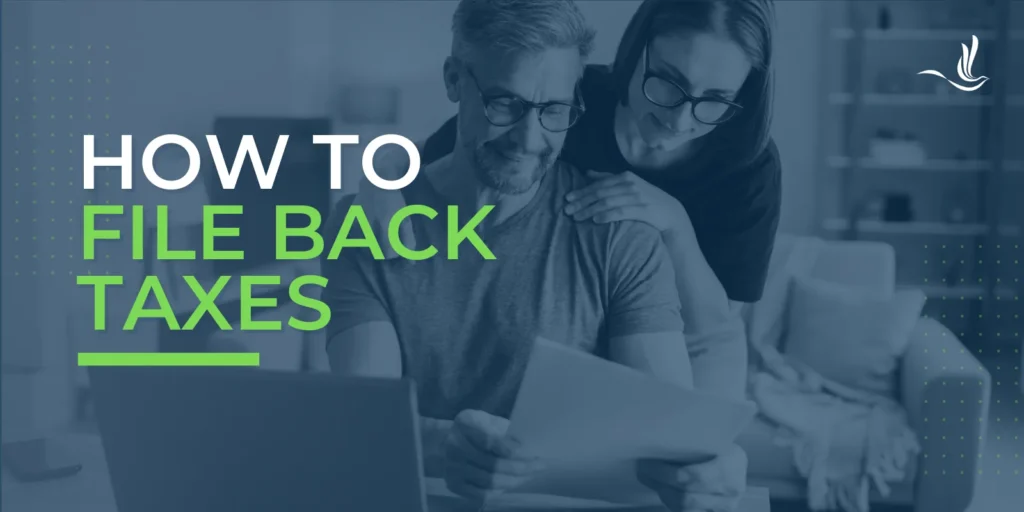
Filing back taxes may seem overwhelming, but catching up is essential to avoid penalties, interest charges, and potential legal consequences. Whether due to an unexpected financial crisis, oversight, or miscalculation, owing back taxes isn’t uncommon. This article will guide you through what back taxes are, the consequences of ignoring them, and actionable steps to file and pay off what you owe.
Understanding Back Taxes
Back taxes are unpaid taxes from previous years, including income taxes, payroll taxes, or business taxes. The IRS considers these overdue and typically assesses penalties and interest until the full amount is paid. But the IRS doesn’t stop there. More serious consequences include garnishment of wages, asset seizure, and in severe cases, criminal charges.
Why Should I File Back Taxes?
Besides avoiding mounting penalties, interest, and IRS collections, there are plenty of reasons to file back taxes. Not filing a tax return could mean losing out on refunds if you overpaid your taxes for the year. In general, you have three years from the original filing deadline to claim a refund for that tax year. After this period, the refund expires, and the IRS will not issue it, regardless of the amount owed to the taxpayer. For example, if you didn’t file in 2023, you have until April 15, 2026, to claim your refund.
Failing to file can also have negative impacts on future financial opportunities, especially if you’re self-employed. For example, if you don’t file your taxes, you are not paying self-employment tax, which contributes to Social Security and Medicare. This means if or when you need to access these benefits, you won’t be able to. In addition, self-employed individuals rely heavily on tax returns to prove their income. Not filing your tax returns can mean not being able to obtain a mortgage or business financing.
How Far Back Should I Go?
The IRS generally requires taxpayers to file the last six years of tax returns to be considered in good standing. This means that if you have more than six years of unfiled returns, the IRS usually focuses on those most recent six years to assess your compliance. Once you file these returns and address any outstanding balances or establish a payment plan, the IRS considers you compliant.
Gather Relevant Information
Before you begin filing, collect all the information needed to prepare your missing returns. Some of these items probably include:
- Income Statements: W-2s, 1099s, or other records of income.
- Bank Records: Statements showing any interest earned or financial transactions.
- Deductions and Credits: Receipts and documentation for tax-deductible expenses, like mortgage interest, charitable donations, medical expenses, or business-related costs.
- Previous Year Tax Returns: Even if incomplete, these can help provide context for the missing years.
If you’re missing any forms, you can request copies from your employer, financial institutions, or use the IRS’s Wage and Income Transcript service to retrieve reported income information.
Choose Your Filing Method
Once you have your documentation, you’ll need to prepare and file the back tax returns. There are three main methods.
- Do It Yourself: You can manually complete the tax forms for the missing years. IRS Form 1040 is standard for most tax returns, but older years may have different requirements. Ensure you use the forms specific to the tax years you missed.
- Use Tax Software: Many tax software providers offer options for filing back taxes. Ensure the software supports the specific tax year you’re filing.
- Hire a Tax Professional: Consider hiring a tax preparer, especially if you’re dealing with multiple years, complex income, or deductions. Tax professionals can help maximize refunds and mitigate penalties.
Prepare and Submit Your Back Tax Returns
Each unfiled year requires a separate return. Ensure you fill out the forms accurately, considering income, deductions, and credits applicable to each year. When done, mail your completed returns to the IRS. Electronic filing for previous years may not be an option, so prepare to send hard copies by mail.
Pay What You Owe (If Applicable)
If you owe taxes for any of the missed years, the IRS will calculate the interest and penalties. Paying what you owe promptly helps avoid further penalties. The IRS offers several payment options. You can pay in full to avoid ongoing interest and penalties. If you can’t afford to pay the balance in full, you can apply for a monthly payment plan. Alternatively, you can look into other tax relief options. One option is the Offer in Compromise, which allows you to settle your tax debt for an amount less than what you owe.
Monitor and Verify Your Returns
After submitting your returns and payment, keep an eye on your IRS account and communication. Confirm that your returns were processed, payments were applied, and no further action is needed. You can create an IRS Online Account to review account balances and transaction history.
Prevent Future Issues
Consider setting up automated reminders to file on time, utilize tax software, or work with a professional annually to prevent future unfiled returns. You may also wish to adjust your withholdings to avoid unexpected tax bills.
Help with Back Taxes
Filing back taxes is critical to maintaining financial stability and compliance. While the process may seem complicated, the steps outlined can guide you through each stage effectively. By staying proactive and working with the IRS, you can minimize penalties, negotiate payments, and prevent future issues. Use these tips and examples to take control of your tax situation and regain your peace of mind. If the idea of dealing with the IRS on your own is intimidating, consider consulting with a tax professional for help. Optima Tax Relief is the nation’s leading tax resolution firm with over a decade of experience helping taxpayers with tough tax situations.
If You Need Tax Help, Contact Us Today for a Free Consultation